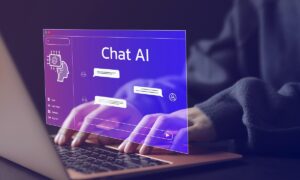Are you prepared to embark on a captivating journey into the future? Get ready, because today we are delving into the fascinating realm where cutting-edge technology converges with the limitless possibilities of science. In this blog post, we will dive headfirst into the captivating world of bioengineering and artificial intelligence (AI) – two remarkable fields that merge to create an awe-inspiring synergy. We will explore how these extraordinary disciplines intertwine, forging groundbreaking discoveries, and transforming our comprehension of life itself. So, put on your goggles and brace yourself to uncover the secrets behind this mesmerizing partnership!
Introduction to Bioengineering and Artificial Intelligence
The integration of AI bioengineering opens new possibilities for solving complex challenges. AI efficiently processes data, uncovers intricate patterns, and offers creative solutions for biological problems. Bioengineers use AI in drug development, brain research, and agriculture, with limitless potential for growth.
To advance further, it’s crucial to explore collaboration between these domains. Understanding the strengths and limitations of each approach helps researchers maximize their effectiveness.
By doing so, they can tackle some of the most critical challenges confronting humanity today.
Advantages of Integrating Both Technologies
The amalgamation of bioengineering and artificial intelligence technologies offers a plethora of advantages. This convergence empowers us to fabricate systems that are more efficient, dependable, and adaptable.
Specific benefits of merging bioengineering and AI encompass:
Augmented Efficiency: AI can streamline tasks and processes within bioengineering, heightening system efficiency.
Enhanced Reliability: AI aids in swiftly and accurately identifying patterns and anomalies in data, bolstering system reliability.
Greater Flexibility: AI contributes to rendering systems more adaptable and responsive to changes, amplifying their adaptability.
Informed Decision-Making: AI provides superior insights and recommendations for decision-making in bioengineering, leading to superior outcomes.
Deeper Understanding of Complex Systems: AI facilitates a more profound comprehension of intricate biological systems, paving the way for more effective solutions.
Challenges Associated with Combining Both Technologies
One of the challenges accompanying the fusion of bioengineering and artificial intelligence is the distinct purposes for which these technologies are typically employed. Bioengineering often revolves around creating or enhancing biological systems, while artificial intelligence predominantly concerns itself with improving computer systems. Consequently, harmonizing the two domains effectively and efficiently can be daunting.
Another challenge pertains to the prerequisite skill sets. Bioengineering necessitates expertise in biology and chemistry, while artificial intelligence hinges on proficiency in computer science and mathematics. This divergence can pose challenges for individuals proficient in one area seeking to acquire comparable proficiency in the other.
Financial constraints constitute yet another hurdle. Both bioengineering and artificial intelligence are resource-intensive fields, and their confluence can escalate costs, making it challenging to secure funding from investors.
Lastly, ensuring the seamless and secure functionality of this amalgamation is a daunting task. Bioengineering and artificial intelligence entail intricate systems, and their integration can introduce complexities that may not be straightforward to diagnose and rectify, potentially leading to unforeseen issues.
Applications of Bioengineering and Artificial Intelligence in Healthcare and Medical Fields
The rapid technological advancements of recent years have given rise to innovative approaches for diagnosing and treating diseases. Two prominent realms, bioengineering and artificial intelligence (AI), are at the forefront of this transformation. Bioengineering employs living cells and tissues to fabricate artificial organs and limbs, while AI revolutionizes healthcare by expeditiously processing and interpreting vast datasets.
AI’s proficiency in swiftly and accurately parsing data is particularly invaluable in genomics, where it can unveil concealed patterns and correlations. Additionally, AI enables the tailoring of personalized treatment plans for patients based on their unique genetic profiles.
The synergistic potential of bioengineering and AI portends a promising future for healthcare. Together, these domains can yield more effective disease treatments, enhance patient outcomes, and ultimately save lives. Bioengineering contributes by fabricating prosthetic and medical devices controlled by AI, such as bionic limbs and exoskeletons, thereby restoring independence to individuals with physical disabilities. Moreover, bioengineered tissues and organs offer hope for those who have lost body parts due to injury or disease.
AI’s application extends to medical imaging and diagnostics, wherein AI-driven algorithms expedite the detection of abnormalities in X-rays or CT scans with superior accuracy compared to human counterparts. This technology also holds the potential to reduce diagnostic errors, delivering quicker and more precise results.
These represent just a few of the myriad applications of bioengineering and artificial intelligence within healthcare and medical domains. As these technologies continue to advance and become more sophisticated, they will assume increasingly pivotal roles in augmenting patient care and outcomes.
Illustrative Instances of Successful Projects Incorporating Both Technologies
Innovative endeavors that meld bioengineering with artificial intelligence are furnishing inventive solutions to humanity’s most pressing challenges.
One exemplary instance is the development of “smart” prosthetic devices controllable by the user’s thoughts, thereby aiding amputees in regaining mobility and independence. These bionic limbs feature sensors that detect electrical signals from the user’s muscles. These signals are subsequently processed by a computer, which translates them into commands to operate the limb.
Another promising application lies in personalized medicine, wherein AI algorithms forecast individual responses to specific medications. This knowledge underpins tailored treatment plans for each patient, improving treatment efficacy and minimizing side effects.
These illustrations underscore how bioengineering and artificial intelligence are forging new frontiers in healthcare and beyond. As these technologies advance, we can anticipate life-altering innovations in the years ahead.
Predictions for the Future of This Confluence
The future of the amalgamation of bioengineering and artificial intelligence promises remarkable advancements and innovations. Here are some predictions for what we can expect in the forthcoming years:
Enhanced Predictive Modeling Precision: As AI evolves, its capacity to forecast outcomes will continue to enhance. This will enable more precise interventions and treatments, ultimately leading to superior patient outcomes.
Proliferation of Personalized Medicine: AI’s ability to scrutinize extensive data will permit tailoring treatments and preventive measures to the unique requirements of individual patients.
Expanded Utilization of Virtual Reality in Healthcare: Virtual reality technology, already deployed in medical training and therapy programs, will find increasingly innovative applications in healthcare. This may include aiding surgeons in planning complex procedures or providing immersive rehabilitation experiences.
Smarter Medical Devices: AI-enabled medical devices will become increasingly prevalent, offering real-time feedback and alerts to users. These devices will span from smartwatches that monitor vital signs to contact lenses that monitor eye health.
Streamlined Healthcare Delivery: AI will enhance efficiency across various healthcare processes, from automated appointment scheduling to the deployment of robotic assistants in hospitals. This increased efficiency will free up time and resources, allowing healthcare providers to focus on delivering high-quality care.
The intersection of AI and healthcare is evolving rapidly, and these predictions represent just a glimpse of the exciting possibilities that lie ahead.
Conclusion
Bioengineering and artificial intelligence stand as potent forces poised to revolutionize the landscape of healthcare. The amalgamation of their expertise empowers scientists to forge groundbreaking treatments for some of humanity’s most formidable diseases. Bioengineers and AI researchers are beginning to explore their boundless collaborative potential, paving the way for an exciting journey of unlocking transformative possibilities.

































